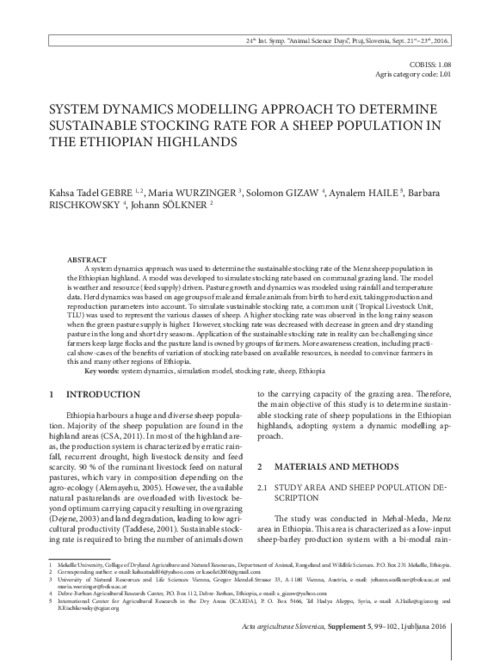System Dynamics Modelling Approach to Determine Sustainable Stocking Rate for a Sheep Population in the Ethiopian Highlands
Abstract
A system dynamics approach was used to determine the sustainable stocking rate of the Menz sheep population in the Ethiopian highland. A model was developed to simulate stocking rate based on communal grazing land. The model is weather and resource (feed supply) driven. Pasture growth and dynamics was modeled using rainfall and temperature data. Herd dynamics was based on age groups of male and female animals from birth to herd exit, taking production and reproduction parameters into account. To simulate sustainable stocking rate, a common unit (Tropical Livestock Unit, TLU) was used to represent the various classes of sheep. A higher stocking rate was observed in the long rainy season when the green pasture supply is higher. However, stocking rate was decreased with decrease in green and dry standing pasture in the long and short dry seasons. Application of the sustainable stocking rate in reality can be challenging since farmers keep large flocks and the pasture land is owned by groups of farmers. More awareness creation, including practical show-cases of the benefits of variation of stocking rate based on available resources, is needed to convince farmers in this and many other regions of Ethiopia

